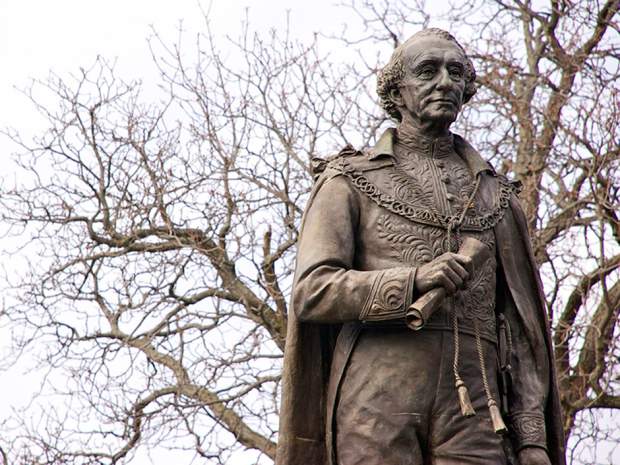More than a year after Kitchener, Ont., rejected it, a proposal to install statues of all 22 Canadian prime ministers at nearby Wilfrid Laurier University is once again facing accusations that it is “politically and culturally insensitive” to memorialize Canada’s heads of governments.
“There’s no point to have them on campus,” said Jonathan Finn, a faculty member leading the charge against the statues on the Waterloo campus.
The “Prime Minister Statues Project,” led by a local citizens group, would erect privately funded sculptures of every chief minister from Sir John A. Macdonald to Stephen Harper.
“The notion is that it would be walkable; you could take an hour in an afternoon and navigate between the whole set,” said Joel Peters, a university representative.
The university’s quad is already host to the first sculpture: a statue of Macdonald hospitably holding two chairs.
The statues were initially proposed for Victoria Park, a public green space in central Kitchener, but the project was rejected in 2014 when 79% of respondents to a city-commissioned survey opposed the plan.
“There is no conceivable reason on this earth to erect a statue of, say, John Turner, who was the appointed PM for 79 days, immediately dissolved Parliament and had his rear handed to him in an election,” read one submission to a city-ordered survey.
As of Wednesday evening, 976 people had signed an online petition opposing the statues’ relocation to Wilfrid Laurier. A day earlier, the university’s senate passed a motion calling on Wilfrid Laurier’s board of governors to cancel its involvement in “the statue project.”
The chief objection at the school has been that the 22 statues would alienate aboriginal students and those from “other marginalized groups.”
“When you choose to represent something in a life-sized, bronze statue, you’re not making a critical comment, you’re celebrating it,” said Finn.
Macdonald, in particular, is a frequent target of aboriginal groups. As Indian affairs minister for 10 years starting in 1878, he was instrumental in drawing up both the Indian Act and Canada’s system of Indian Residential Schools.
In promotional materials for the project, Wilfrid Laurier University administrators said they would “not ignore these wrongdoings,” and asserted the statues would be put in context.
“We have a lot of controversies that, quite frankly, could help by being unpacked,” said Peters.
The university also promised to put up statues of women and aboriginal leaders in future. But according to Finn, it would take “hundreds or thousands” of statues to accurately represent Canadian history.
“There’s no way to solve that,” he said.
Almost all of Canada’s notable prime ministers have a life-sized statue somewhere, but there is no locale that can boast a definitive collection.
The same is generally true in the United States, where statue-makers often skip the lesser-known presidents such as William Henry Harrison, who died 32 days after taking office.
An exception is Rapid City, S.D. To capitalize on tourists heading to Mount Rushmore, the city of 70,000 installed statues of all 43 pre-Barack Obama presidents in its downtown.
Wilfrid Laurier’s board of governors will consider the statue project in November. As it stands, the plan is still to get the 22 statues sculpted and unveiled by July 1, 2017 to mark Canada’s sesquicentennial.
Not all of the statues necessarily need to be on campus, noted Peters.
A nearby veterans park might get Robert Borden and Mackenzie King, Canada’s two wartime leaders.
Others might be lumped into the same statue. Famed rivals John Diefenbaker and Lester Pearson, for instance, could be fixed to the same pedestal and forced to stare each other down for eternity.
























Laissez un commentaire Votre adresse courriel ne sera pas publiée.
Veuillez vous connecter afin de laisser un commentaire.
Aucun commentaire trouvé